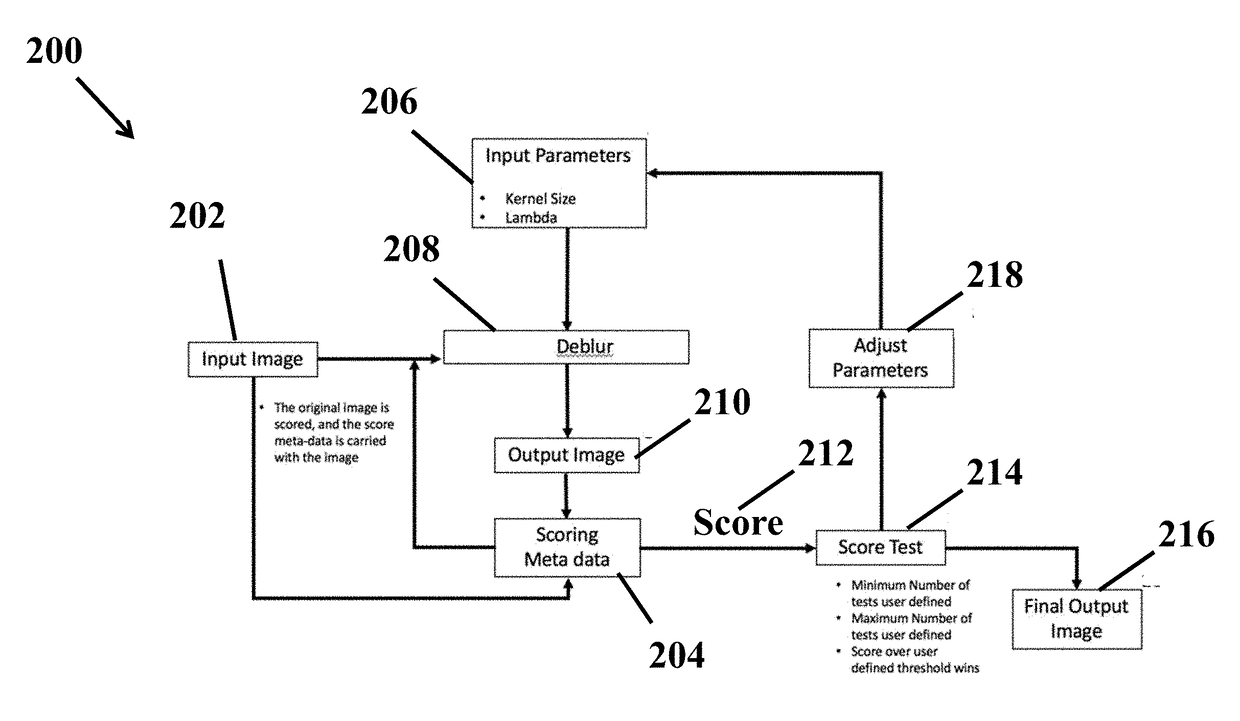System and method for isolating best digital image when using deconvolution to remove camera or scene motion
- Summary
- Abstract
- Description
- Claims
- Application Information
AI Technical Summary
Benefits of technology
Problems solved by technology
Method used
Image
Examples
Embodiment Construction
[0019]The present invention introduces a new technique and process for removing the complexity of a known image deconvolution technique so as to isolate the best output from the algorithm with minimal input from a user.
[0020]With reference to FIG. 1, an illustration of a network environment 100 in which electronic devices 102a-102n (collectively 102), such as mobile smartphones, are used to capture images 104a-104n (collectively 104) and communicate with back-end servers 104 for storage and / or editing of the images via a network 106 is shown. The images 102 may be communicated via data messages 108a-108n (collectively 108). In one embodiment, rather than the user using the back-end servers 104 for editing, the electronic devices 102 may be configured to edit the images, as further described herein. The servers 104 may be part of a server farm that is used to store data, such as images, and / or provide for user applications, such as social media, search functions, data storage, or any...
PUM
 Login to view more
Login to view more Abstract
Description
Claims
Application Information
 Login to view more
Login to view more - R&D Engineer
- R&D Manager
- IP Professional
- Industry Leading Data Capabilities
- Powerful AI technology
- Patent DNA Extraction
Browse by: Latest US Patents, China's latest patents, Technical Efficacy Thesaurus, Application Domain, Technology Topic.
© 2024 PatSnap. All rights reserved.Legal|Privacy policy|Modern Slavery Act Transparency Statement|Sitemap



